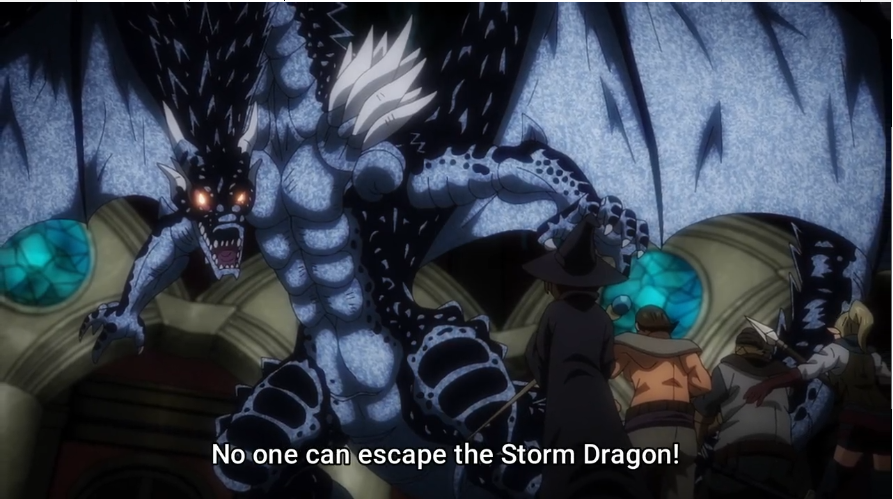Summer 2024
10 July, 2024
As a rule, I try not to be too harsh in my posts here, both because I am genuinely very much a fan of isekai as a genre and because there is far too much negativity on the internet as it is. A weak first episode does not always mean a weak anime, and I know for a fact that multiple titles airing this season will improve as they go on, at least if the source material is any guide. And should any of the anime airing right now stand the test of time, whether or not it aired in a weak season will surely be forgotten.
That said, on the whole, I am disappointed with the isekai offerings of the Summer 2024 season. Maou Gun Saikyou no Majutsushi wa Ningen datta is the worst offender; the decision to outright cut the isekai aspect of its adaptation is never something one wants to see as an isekai fan. But Madougushi Dahlia wa Utsumukanai restricting it, in the first episode, to a single pre-credits scene (while something that has been done before) is not much better. Kono Sekai wa Fukanzen Sugiru certainly times its reveal well, but whether being trapped in an MMO counts as isekai and how much this world counts as a *world* is after one episode an open question; still, I am impressed so far. Elf-san wa Yaserarenai, a reverse isekai, is very much an ecchi series, and very much trying to appeal to a particular taste in women which I do not personally share. Isekai Suicide Squad (which is already almost halfway over) and Isekai Shikkaku (which just started) both send established figures, one fictional, one historical, into other worlds, and I feel like I would enjoy both of them more if I was more familiar with the underlying lore. Both Hazurewaku no “Joutai Ijou Skill” de Saikyou ni Natta Ore ga Subete wo Juurin suru made and Isekai Yurui Kikou: Kosodateshinagara Boukensha Shimasu have generic opening episodes, and the latter does not improve with episode 2. And finally, the 3rd season of Tensei shitara Slime datta Ken continues from last cour, and although the upcoming arc is very fun in the LN, this season (especially the first six episodes) has unfortunately been marred as an adaptation by a tendency to adapt meetings as meetings, despite the ways in which long pages of dialogue fail to translate to animated form in an entertaining way; I hope this part will be a bit flashier, for Rimuru and his council are very much still involved in what’s to come.
Isekai Suicide Squad stars a group of villains turned antiheroes who, both individually and as a team, have decades long histories in American comic books. The suicide squad gets its name from the suicide missions these imprisoned supervillains are forced by the government to go on, and going full GATE on a fantasy world certainly qualifies.
Japanese adaptations of American comic book properties are not always impressive; Madhouse’s take on various Marvel superheroes was entirely forgettable, and it would have been easy enough for WIT Studio and Warner Brothers Japan to rely entirely on brand recognition and the novelty of the concept to sell BDs, streaming subscriptions and merchandise. Fortunately, Isekai Suicide Squad has avoided this pitfall; we are instead gifted with an entertaining adventure story that might legitimately, when all is said and done, prove to be the best isekai anime of the season.

(Joker himself, admittedly, mostly appears in Harley Quinn's flashbacks; she is very much a woman in love.)
Our protagonists, Harley Quinn, Clayface, Deadshot, Peacemaker, and King Shark, are sent to the other world, where they show up in the middle of a battle. Despite using their powers to win the battle for the human side against the orcs, there’s issues with the language barrier and the guards, disgust at King Shark’s eating habits, and a queen who dislikes otherworlders, so they’re thrown in prison, despite Clayface’s efforts at genre savvy.
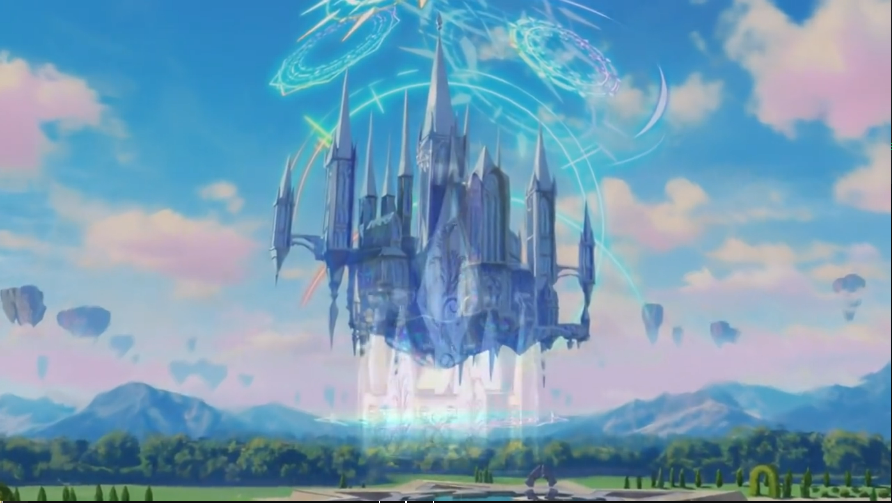
But as proper supervillains, what is there to do but befriend the local orcs and organize a prison break?
There’s a timer with bombs in the suicide squad’s necks, an internal political conflict, with the queen opposed by her princess and her leading advisor, there’s a battle against one of their predecessors and a mind-controlled beastman army, and because of an unusual release schedule, we’re almost halfway done. It’s a lot of fun so far, and I’m excited to see what becomes of the Suicide Squad in this other world.

Decades after his death by double suicide, Dazai Osamu remains one of Japan’s most famous authors, although anime fans may know him better for his role as the protagonist of the hit series Bungou Stray Dogs, or the adaptation of the popular video game Bungou to Alchemist, than from any adaptations of his actual books, of which there have been a fair number over the years. Isekai Shikkaku is therefore the *third* anime to turn him into a protagonist, although it is apparent from the beginning that he is not cut out for such a role… to the point of attempting suicide again while Annette, the girl who guides otherworlders, tries to explain to him his new position as hero.

Despite being chosen by the isekai truck itself, an author whose name has become synonymous with melancholy can not transform, upon summoning, into a happy person. (And if he had, would audiences still recognize him as Dazai Osamu?)
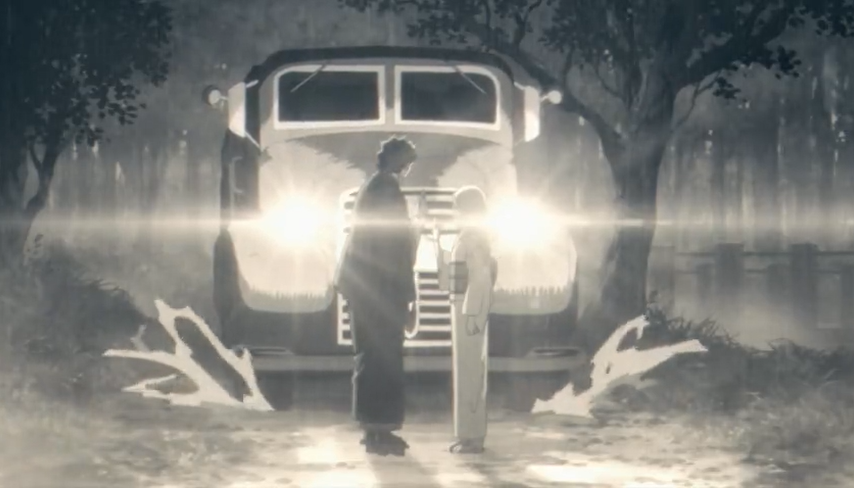

He goes outside (at level 1, with crappy stats, possibly as part of another suicide attempt) but is disinterested in actually saving a girl he runs into.
 But Dazai is attacked by the tree as well, letting him dream of another double suicide. Unfortunately for him, he accidentally kills the tree with poison when it tries to take his life force!
But Dazai is attacked by the tree as well, letting him dream of another double suicide. Unfortunately for him, he accidentally kills the tree with poison when it tries to take his life force!
A quest to find and die with his lover again (as he was not the only one to get hit by truck-kun; it appears to have come at the time of his historic death, given the number of suicide attempts, but the name of the woman he was with is different) is enough to keep him going through the episode’s end. The first episode was an amusing comedy, and I hope it will not grow stale now that the obvious jokes have been told.
I have reason to believe that the protagonist of Isekai Yuriri Kikou: Kosodateshinagara Boukensha Shimasu, Kayano Takumi, has taken combat lessons from Patamon.
 He even has wind cutter for his other attack! Which I’m pretty sure Patamon can get in some games…
He even has wind cutter for his other attack! Which I’m pretty sure Patamon can get in some games…
More seriously, after that fight, the series cuts to the background, where we learn that Takumi has been accidentally killed by a very apologetic god, in a manner reminiscent of Isekai wa Smartphone to Tomo ni’s hero, and more recently (and more closely, as both were repairing the space-time continuum), Potion-Danomi de Ikinobimasu!’s heroine. Just like in those shows, the otherwordly reincarnation and associated powers come as part of an apology.
Takumi soon finds two extremely shy five year old twins, who he names Alan and Elena, and who do not speak for half the first episode; running into them was more along the lines of divine manipulation than coincidence. Their shyness is, however, if anything exceeded by their immense combat skill; as they have no known family, he becomes their guardian, but he wonders if he’s just using them for their power. Despite this, he’s so far played the role of a good stepparent, and their guild, White Wings, has prospered.

Ending the second episode with a pet Fenrir wins this anime few points for originality; last season’s Lv2 kara Cheat datta Motoyuusha Kouho no Mattari Isekai Life had a Fenrir *wife*, and last year’s Tondemo Skill de Isekai Hourou Meshi had a MC contract with a gluttonous Fenrir in order to feed it. If there’s anything interesting about it, it’s that the gift came from the water god, not the wind god who summoned Takumi – behind the scenes divine machinations are not without potential, but how exciting could it be if they’re just fighting to win his favor?
The one thing Isekai Yururi Kikou does have going for it so far are the family moments, things like the moment they finally say hello or teaching the twins how drops work after defeating a mole.
 In a genre where most parent protagonists get that way by impregnating their harems well into the story, an adoptive father and a tale that is appropriate (so far) for younger audiences may carve out a certain family-friendly niche.
In a genre where most parent protagonists get that way by impregnating their harems well into the story, an adoptive father and a tale that is appropriate (so far) for younger audiences may carve out a certain family-friendly niche.
It is common in isekai for characters to travel all the time, to not know where their next meal is coming from, and to complain of hunger in the process. Even if one does find food, it is seldom as delicious as what one knows from home; the joy of Japanese food has become a common trope in the genre; even in this season, Isekai Yururi Kikou devotes a few minutes at the start of its 2nd episode to making bread.
Realistically, the lifestyle changes associated with characters going on otherworldly adventures without leaving their bodies behind would therefore lead to significant weight loss, although Iseleve is the only series that comes to mind to actually bother with multiple character designs. Elf-san wa Yaserarenai, the season's sole reverse isekai, also reverses this process; perhaps the thin elves we are accustomed to seeing only remain that way because their home forests don’t have McDonalds french fries.
The title character, Erufuda, has gained too much weight on Earth to fit through the portal home, and needs workouts and the help of a personal trainer (who is the perspective character) to do so; she initially shows up in disguise.
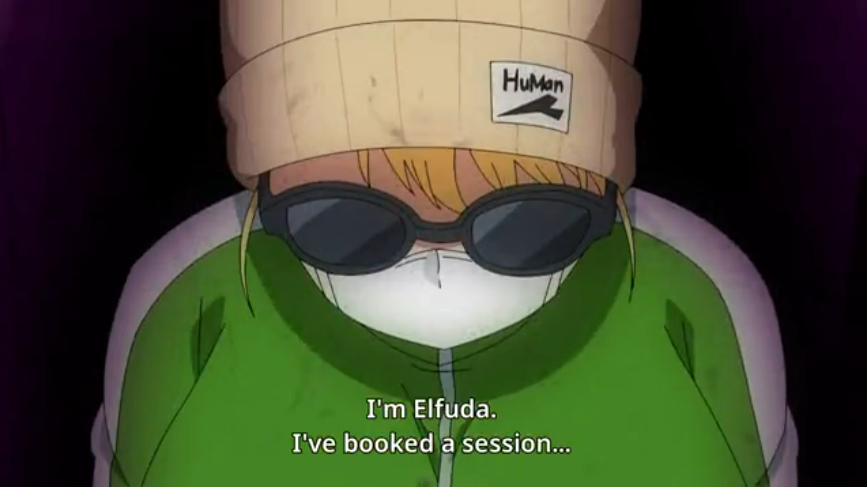
And after significant in-world effort, if not much run time, she finally succeeds.
 Of course, as this is an anime series (if one with half-length episodes) and not just a one-shot, Erufuda-san relapses, because Earth food is too tasty and she knows she can burn it off again. It's an ecchi anime adapting a fairly popular manga, and if you're into overweight elf girls you'll probably like it more than I did.
Of course, as this is an anime series (if one with half-length episodes) and not just a one-shot, Erufuda-san relapses, because Earth food is too tasty and she knows she can burn it off again. It's an ecchi anime adapting a fairly popular manga, and if you're into overweight elf girls you'll probably like it more than I did.
One would be forgiven for confusing Hazurewaku no "Joutai Ijou Skill" de Saikyou ni Natta Ore ga Subete wo Juurin suru made, after the first episode, with Arifureta Shokugyou de Sekai Saikyou or its imitators, for this too is a tale in which a bullied student, lacking the powers their classmates receive after summoning, works their way back up to become a hero.
 The student in question, Mimori Touka, it should be noted, is very much not Hazurewaku’s most interesting character. But the real reason to read or watch it, Eve, shows up too late to justify squeezing her in the series’ first episode.
The student in question, Mimori Touka, it should be noted, is very much not Hazurewaku’s most interesting character. But the real reason to read or watch it, Eve, shows up too late to justify squeezing her in the series’ first episode.
The appeal one can point to, at this point in the story, is in wondering how a very underpowered protagonist can survive.
 Touka finishes the first episode with zero MP, and there is a reason people generally prefer actually dealing damage to inflicting status effects in video games. At least poison and paralysis stack in this setting, unlike in many others, so he’s not dead yet.
Touka finishes the first episode with zero MP, and there is a reason people generally prefer actually dealing damage to inflicting status effects in video games. At least poison and paralysis stack in this setting, unlike in many others, so he’s not dead yet.
Madougushi Dahlia wa Utsumukanai’s title character is not the first isekai tensei protagonist to die of overwork. Off the top of my head, so does the doctor in Isekai Yakkyoku, while Tensei Kenja no Isekai Life’s protagonist is traumatized and allows it to become a source of inspiration to lead a slow life. Nor is she the only one to have very little coverage of her past life; it is easy to forget that one is watching an isekai at all.
 However, characters raised from birth and showing talent for magic does to tend to be more common in isekai than in other types of fantasy; Mushoku Tensei has had an immense influence.
However, characters raised from birth and showing talent for magic does to tend to be more common in isekai than in other types of fantasy; Mushoku Tensei has had an immense influence.
What we have with Madougushi Dahlia is a charming story of a girl raised by her father to become an artificer, with one frightening fire accident, getting better and better every year. She has not learned to avoid the tendencies which ended her past life young, but it’s a bit easier to deal with losing track of time when creating a new magic device; when she goes on her journey at the episode’s end, she’s full of hope and determination to get better. Ganbatte!

Kono Sekai wa Fukanzen Sugiru’s status as true isekai is somewhat ambiguous, at least an episode in, as tends to be the case with the trapped in a MMO subgenre; is this really a world, or is it only a very buggy game?
Perhaps if I had enjoyed it less I would ignore it here, but the tale of a debugger who can’t log out, who feigns being a brave hero, only to show his true intentions in the worst possible way, is too fascinating to overlook. The reveal is what makes the first episode, an apparently charming tale of a little girl named Nikola befriending a traveler and fighting to rescue a village in danger, perhaps the strongest first episode of any anime all year.
 I regret having to spoil it, but it’s worth it if it leads you to check out this fascinating series; Nikola, who we see die, shows up alive and well, proving herself to be yet another bug right before the end credits play.
I regret having to spoil it, but it’s worth it if it leads you to check out this fascinating series; Nikola, who we see die, shows up alive and well, proving herself to be yet another bug right before the end credits play.
I don’t know where one takes a story from here, but I really want to find out; I’ve never seen anything like this concept.
Finally, Tensei shitara Slime Datta Ken’s third season is still running, and has passed the worst of meeting hell. I won’t deny that the first six episodes of this season have left me with serious concerns about the staff’s ability to adapt what’s to come, but with foreign dignitaries en route to Tempest, the story is about to reach one of its best story arcs; with a festival coming and foreign visitors (including important dignitaries) planning to attend, there’s an arena and a dungeon to build, the latter with help from Ramiris.
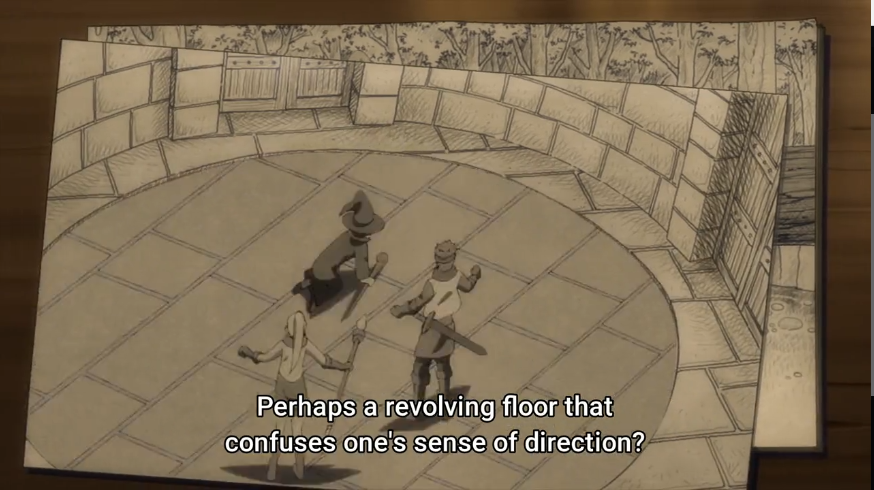
And here, I very much share Veldora’s excitement!
